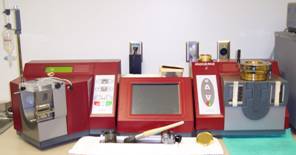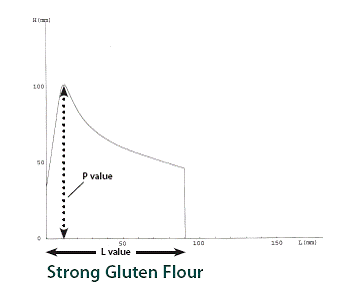Alveograph
We have one alveograph in our facilities.
Dough for the alveograph test is mixed in the instrument for a set time with a set absorption, sheeted into a strip of dough, cut into patties and rested. The dough pieces are then placed in the instrument and compressed air is used to blow a dough bubble. The over pressure required to blow the bubble and the time before the bubble fails are used to arrive at the biaxial extension of the sample. A number of values can be derived from the alveogram as shown at the left. The most important appears to be the W (work) value. A W of about 100 is obtained with cookie flours and a value near 200 for bread flours. The preset mixing time and water absorptions are very low compared to the optimum values for U.S. flours, thus the doughs are quite dry. A modified method has recently been developed that allows for the optimization of both absorption and mix time.

Information source: "Wheat and Flour Testing Methods: A Guide to Understanding Wheat and Flour Quality: Version 2"
